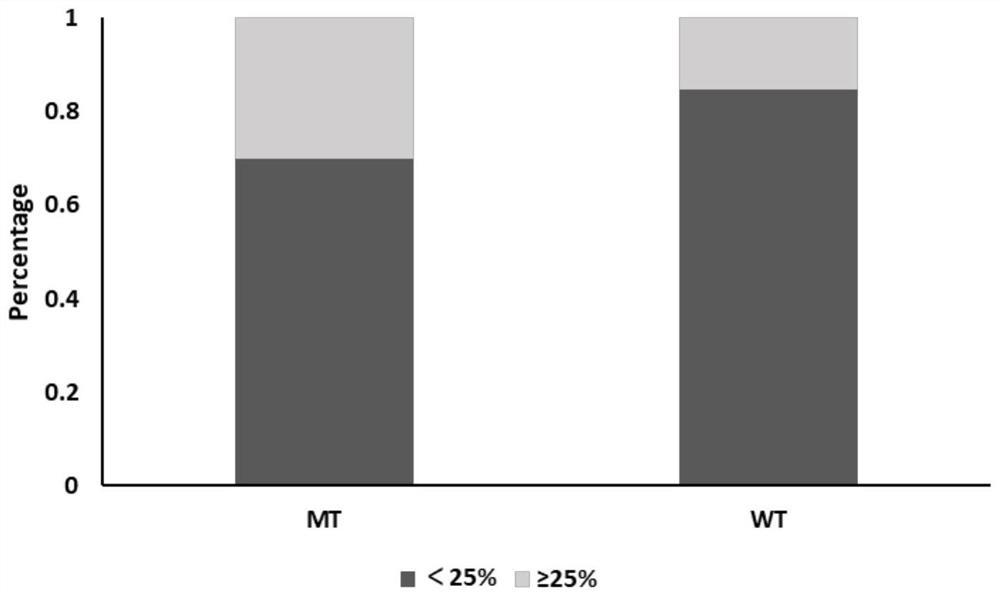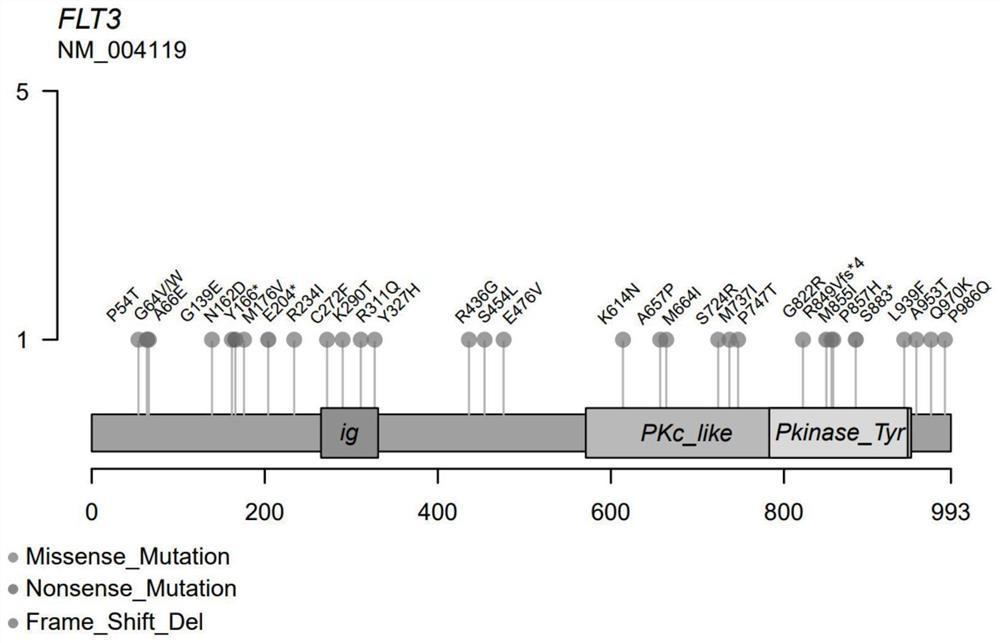Application of flt3 gene mutation in predicting sensitivity to immune checkpoint inhibitor therapy in patients with non-small cell lung cancer
A non-small cell lung cancer, immune checkpoint technology, applied in the field of clinical molecular diagnostics, can solve the problem of not covering people who benefit from immunotherapy, and achieve the effect of avoiding blind medication, improving detection efficiency, and simplifying detection content.
- Summary
- Abstract
- Description
- Claims
- Application Information
AI Technical Summary
Problems solved by technology
Method used
Image
Examples
Embodiment
[0073] The present invention specifically adopts following methodology to study
[0074] Sample material: Experimental samples were obtained from FFPE tumor samples of Chinese non-small cell lung cancer patients and paired peripheral whole blood control samples (all patients provided written informed consent). The study was analyzed by targeted capture NGS sequencing, specifically involving a panel comprising 551 cancer-associated genes.
[0075] experiment method:
[0076] 1) The present invention uses a finished commercial kit to extract the DNA of FFPE slices and whole blood samples with tumor cells accounting for more than 20%, and the extracted nucleic acid is quantified by Qubit and analyzed by Aglient 2100 before entering the library construction.
[0077] Specifically: the library construction of the present invention uses a probe hybridization capture method, the library construction and hybridization capture reagents used are commercial reagents, and the probes are ...
Embodiment 1
[0087] Example 1 Characterization of patients with non-small cell lung cancer
[0088] The present invention included a total of 2300 patients with non-small cell lung cancer into the study. The characteristics of the patients are shown in Table 1. The median age at diagnosis was 63 years. There were 2066 patients with definite pathological information, 1816 (79.0%) and 250 (10.9%) patients with lung adenocarcinoma and lung squamous cell carcinoma, respectively. TMB detection was performed on 2300 patients. The median TMB of the whole population was 2.94mut / Mb (IQR, 0.74-5.88). Tumors with TMB≥10muts / Mb accounted for 12.3%. In this example, it was found that age was positively correlated with TMB (p<0.001). In addition, the TMB value of lung squamous cell carcinoma patient group (p<0.001) was higher.
[0089] Table 1. Characteristics of patients with non-small cell lung cancer
[0090]
[0091]
Embodiment 2
[0092] Example 2 The frequency of FLT3 gene mutations in Chinese NSCLC population and its correlation with immunotherapy biomarkers PD-L1 and TMB
[0093] Statistical analysis of FLT3 gene mutations in 2300 patients with non-small cell lung cancer found that 45 of the 2300 patients with non-small cell lung cancer carried FLT3 gene mutations, accounting for 1.96%. There was no significant difference in age between FLT3 mutation and wild type patients (Table 2). The TMB of FLT3 mutant patients was significantly higher than that of FLT3 wild-type patients (median TMB: 10.3vs.2.84mut / Mb, pfigure 1 ). Among the 2300 NSCLC patients, 927 tumor tissues were detected by PD-L1 immunohistochemistry, among which PD-L1 was negative (20.8% of patients with PD-L1 TPS score figure 2 ).
[0094] Table 2. Correlation between FLT3 mutations and clinicopathological features in NSCLC patients
[0095]
[0096]
PUM
 Login to View More
Login to View More Abstract
Description
Claims
Application Information
 Login to View More
Login to View More - R&D
- Intellectual Property
- Life Sciences
- Materials
- Tech Scout
- Unparalleled Data Quality
- Higher Quality Content
- 60% Fewer Hallucinations
Browse by: Latest US Patents, China's latest patents, Technical Efficacy Thesaurus, Application Domain, Technology Topic, Popular Technical Reports.
© 2025 PatSnap. All rights reserved.Legal|Privacy policy|Modern Slavery Act Transparency Statement|Sitemap|About US| Contact US: help@patsnap.com



